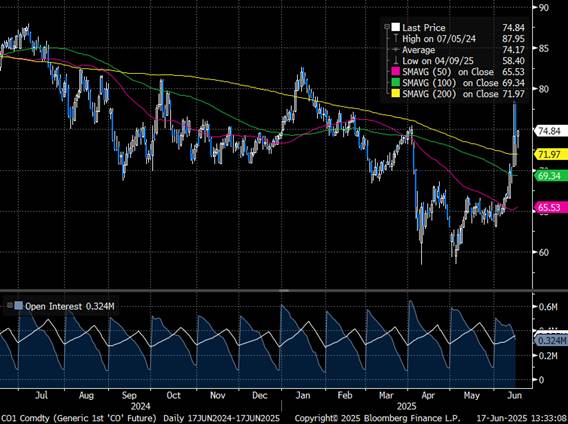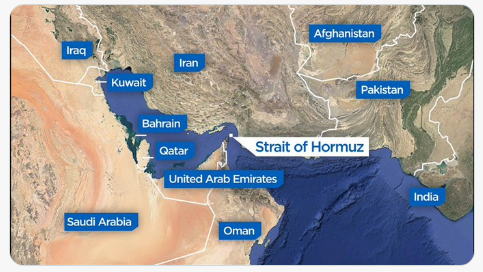Oil Context in Iran: Currently, Iran produces approximately 3.3 to 3.4 million barrels per day of crude oil. (According to OPEC, Iranian production stood at [figure to be completed] barrels/day in March 2025). In 2023, Iran exported 1.4 million barrels per day (mbpd) of crude, mainly to China, with total exports (including oil products) exceeding 2 mbpd. With the reimposition of sanctions, Iran has relied on a ghost fleet to bypass restrictions and clandestinely maintain its exports. Iran accounts for 3% of global production.
The ongoing attacks between Israel and Iran have significantly increased uncertainty over oil prices, due to the growing threat of supply and transport disruptions in the region. Tensions in the Middle East represent a new negative shock to an already fragile global economy. The escalation in June 2025 linked to Israeli strikes temporarily affected Iranian exports — which dropped to ~100,000 bpd this week — but domestic production has not yet undergone a significant contraction.
Brent Price

Even though we believe the impact on the economy will remain manageable, the rise in oil prices and the resulting increase in inflation would pose a real challenge for central banks. The increase in Brent reflects a high geopolitical risk premium as well as a heightened likelihood of tighter oil supply.
In this context, several oil shock scenarios are conceivable. In one scenario, the attacks cease, but the West imposes new sanctions on Iran, cutting part of global oil production. Another scenario involves continued attacks and targeted strikes on Iranian oil infrastructure, halting all of the country’s oil exports. OPEC could partially offset the shortfall, but short-term tensions would push prices toward 90 dollars per barrel. (This second scenario accounts for about 3 million barrels/day — nearly all of Iran’s supply.) The Fed would likely delay its rate cuts until 2026.
In the euro area, the impact would be more pronounced, leading to economic stagnation through the end of the year. This context could prompt the ECB to overlook the moderate rise in inflation and continue with rate cuts in 2025.
A highly adverse scenario would be Iran attempting to block the Strait of Hormuz, halting oil exports from Kuwait and Qatar, and severely curbing those from Iraq, the United Arab Emirates, Oman, and Saudi Arabia. Brent would surge to $130/barrel before falling back once the strait is reopened, but a lasting risk premium would remain priced in. About 20% of global oil flows through the Strait of Hormuz, the only maritime gateway to the Persian Gulf.
Strait of Hormuz

U.S. inflation could then peak at nearly 6%. In the euro area, it could reach almost twice the ECB’s target (source: Oxford Economics). Such a sharp increase could force central banks to delay further rate cuts until early 2026 in order to limit the risk of second-round effects. We currently believe that the oil issue is the main short-term market driver and represents one of the natural hedges against the current geopolitical risk.



